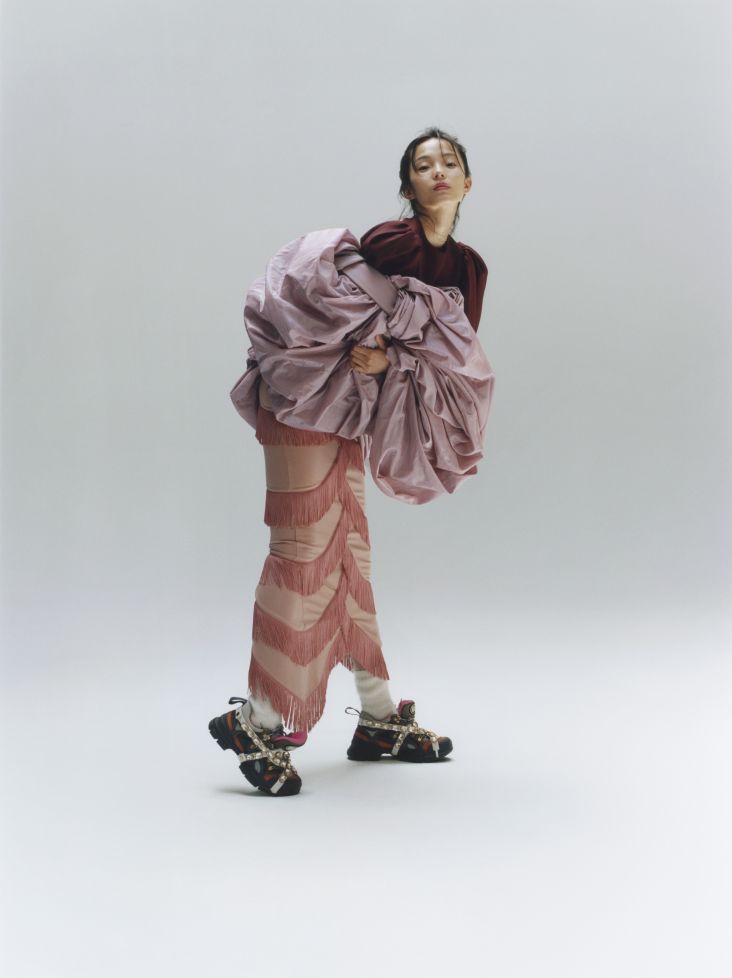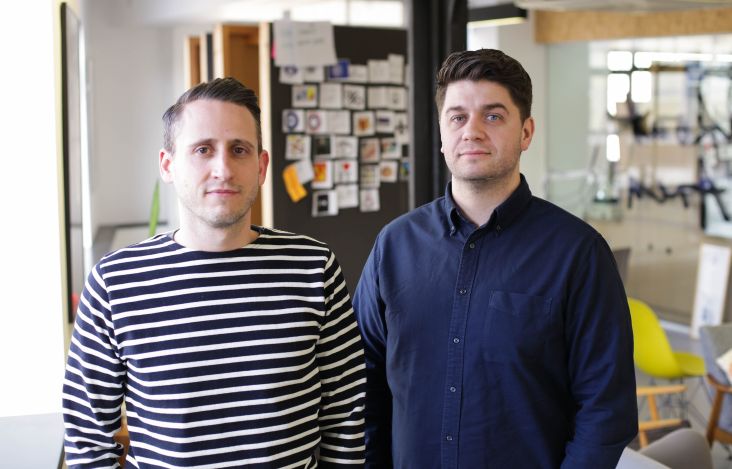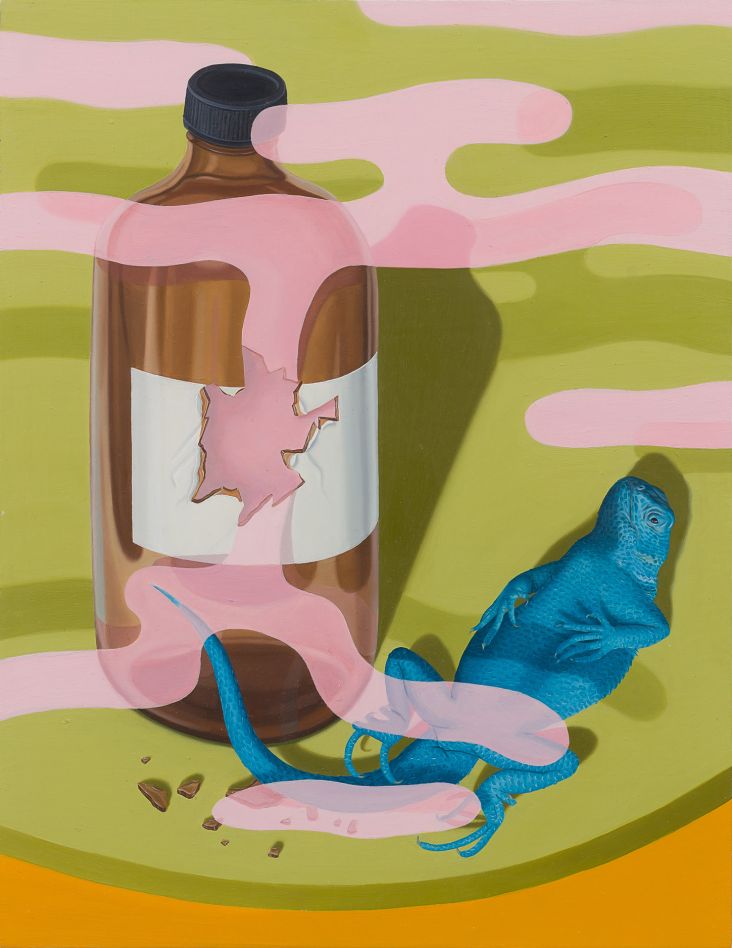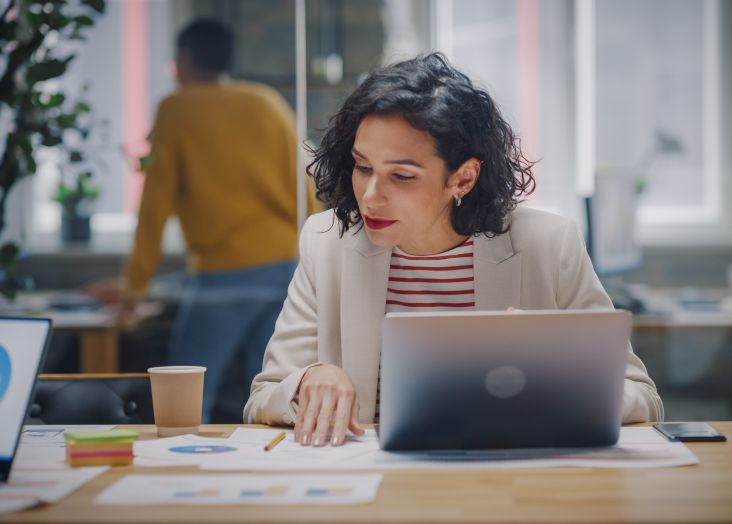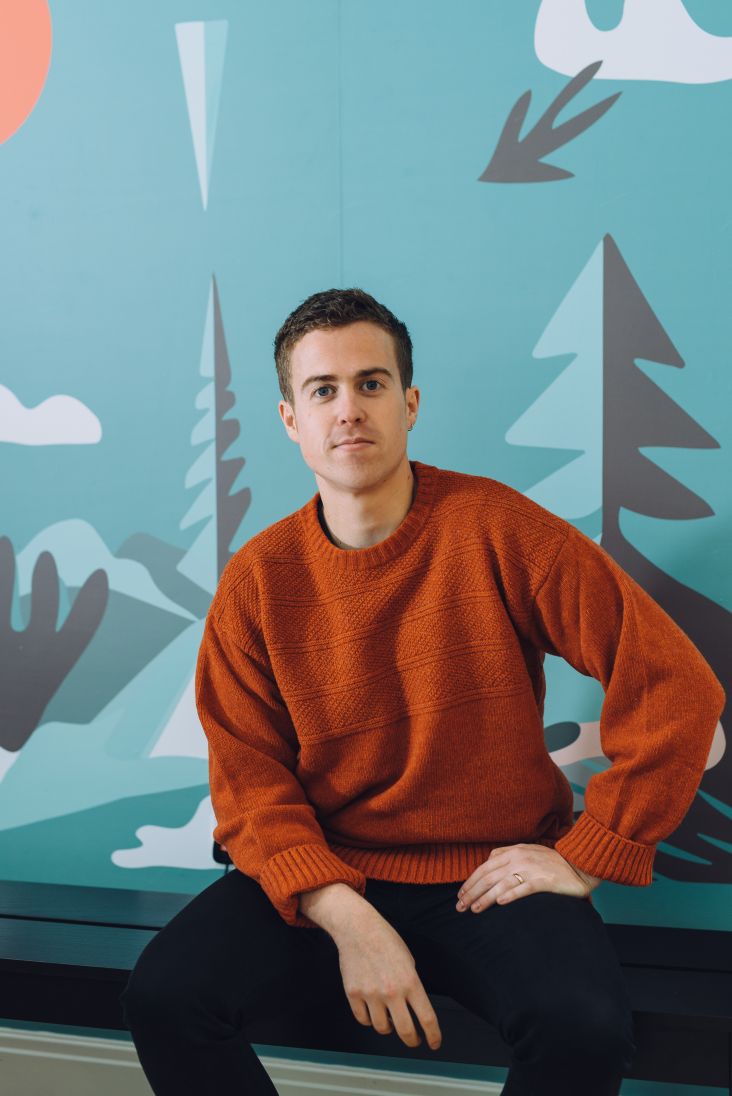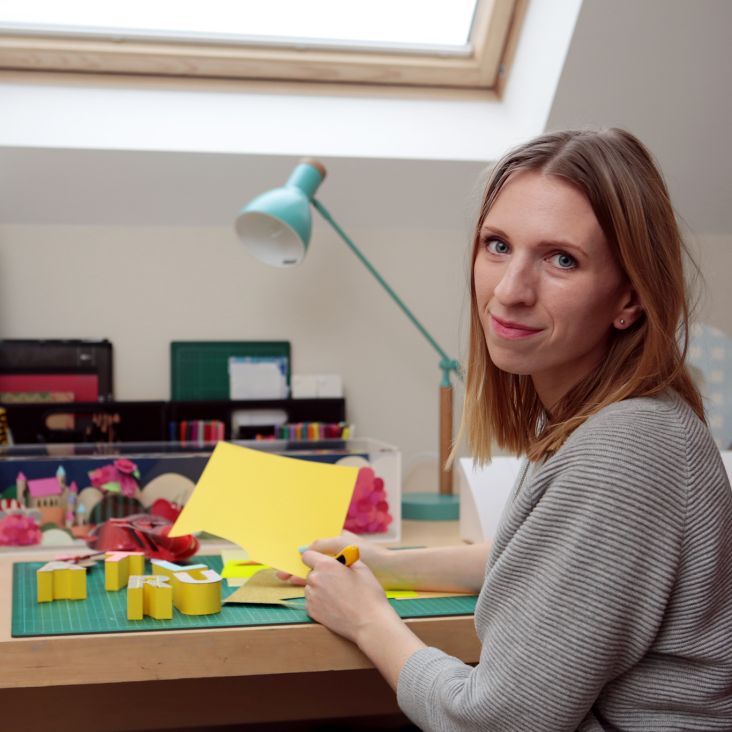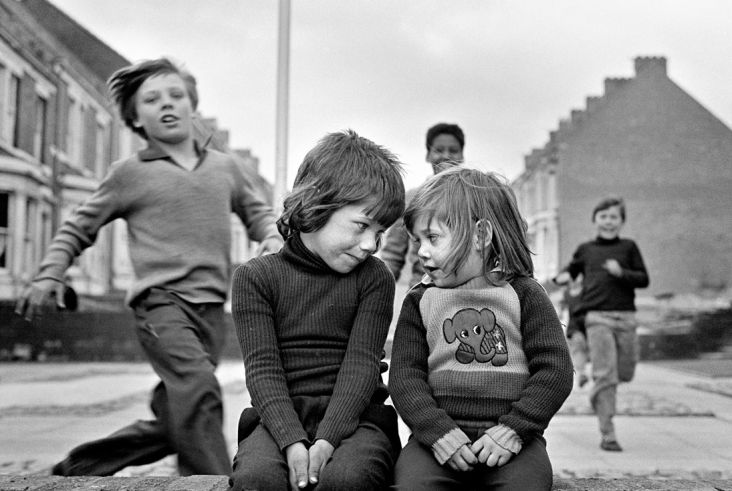Rob Coke of Output on their new brand, taking a more focused approach and overcoming growth challenges
After a relaxing Christmas break, we return to our desks with a renewed sense of energy and a desire to make things better. With time to reflect, we've finally had the headspace to look at our careers or businesses and come up with ways to improve them.
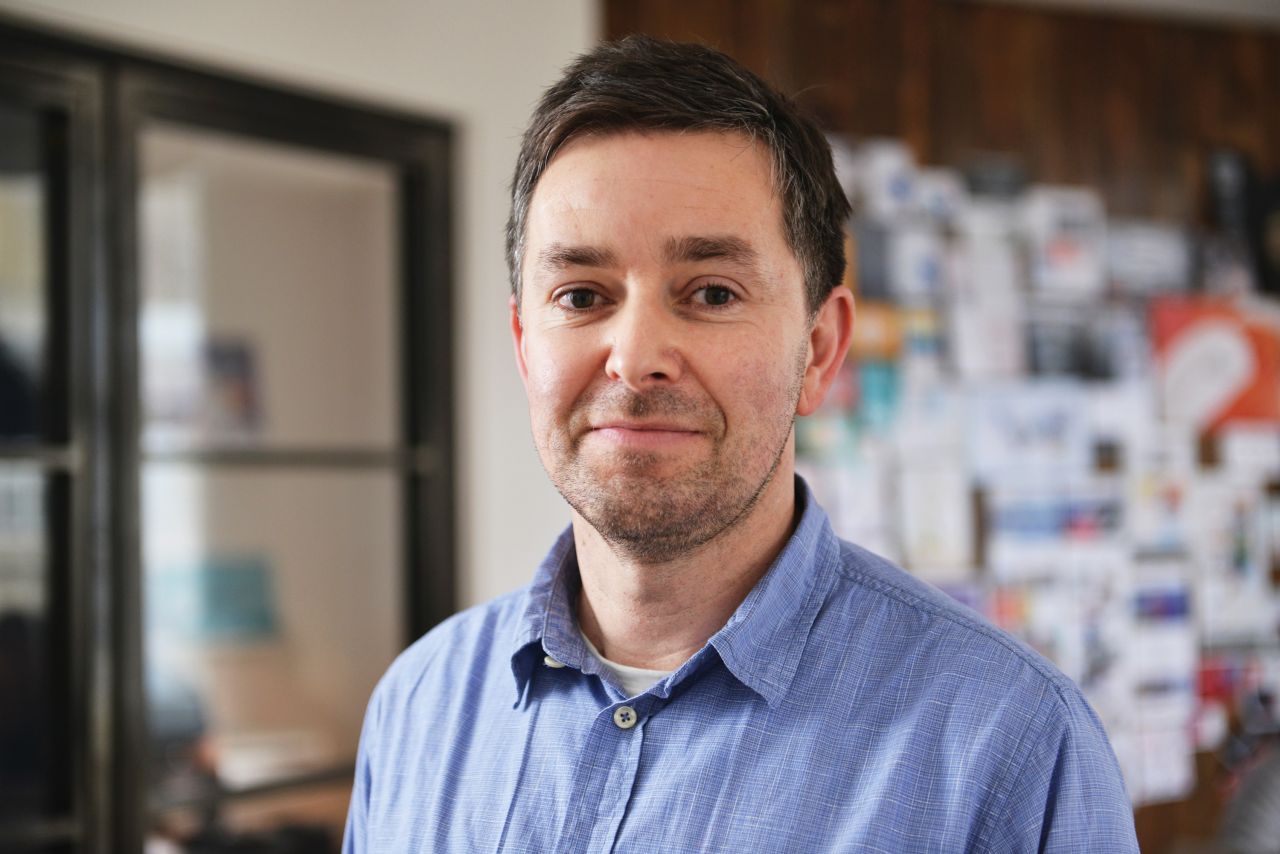
If you're ready to fight another year and you're excited about what 2019 has in store, then our first interview back will be just the inspiration you need.
Rob Coke is co-founder and Executive Creative Director of Studio Output – the company behind Auto Trader's brand refresh, BBC Sport's ongoing online success and Beano's launch on the web. He and his co-founding partner and Managing Director, Dan Moore, have recently gone through a complete rebrand and revamped their website, ready for the new year.
It's apparently a repositioning to better reflect how the award-winning London studio has evolved over time. We spoke to Rob about this new approach and much more.
You have a new website and approach. Congratulations. What's changed?
We’ve refocused around the idea of "helping brands adapt and thrive in a connected world". In the past, we’ve positioned ourselves as a generalist brand and design agency. And although we can apply our thinking and skills to any challenge, increasingly we find ourselves helping people adapt their brands to make them more coherent and flexible across the devices and social platforms people use every day.
When a brand is thriving like that, it becomes easier to discover, is downloaded and used more frequently, talked about and shared. It becomes something which is part of people’s daily lives, getting them to content they need or love, with clever ways to help them discover new stuff. Crucially, it feels recognisable and satisfying throughout the experience, because of distinctive cues that give a sense of brand that they enjoy and remember.
The clients we’re most able to help have a progressive mindset – they recognise the opportunities the connected world gives them. But perhaps they have a brand or design language which isn’t fit for purpose any more. It might be built for a different era, medium or technology. They know something needs to change, but don’t know exactly what, or how they might do it. Or they have competing needs between marketing and product teams, and the brand is being weakened by inconsistencies.
We can see the difference this progressive thinking can have when combined with a brilliantly-thought out and flexible design language. With people experiencing so many businesses through digital products, getting a sense of the brand living through the product is a tricky challenge. The system needs to dial down for important transactional moments, but dial-up for more expressive brand signatures. But it needs to feel cohesive and ownable, otherwise, every mobile site or digital product becomes optimised to the same level of functionality.
We work in that space that brings the brand to life across those products and platforms. And although as designers we love the challenge of creating something new, actually we’re always adapting something that exists already – even a startup will have some form of ‘proto-brand’ in place which needs to be rethought and rebuilt. Design is always about adapting and improving.
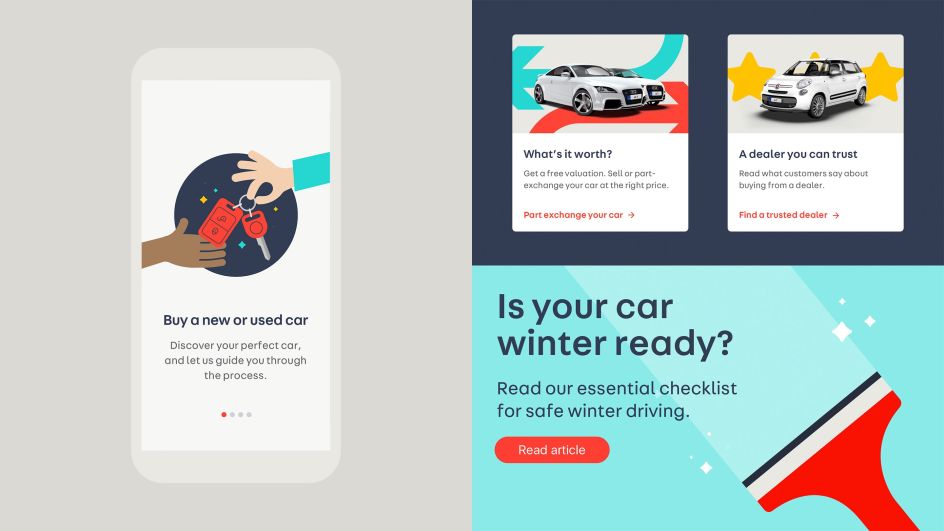
Auto Trader
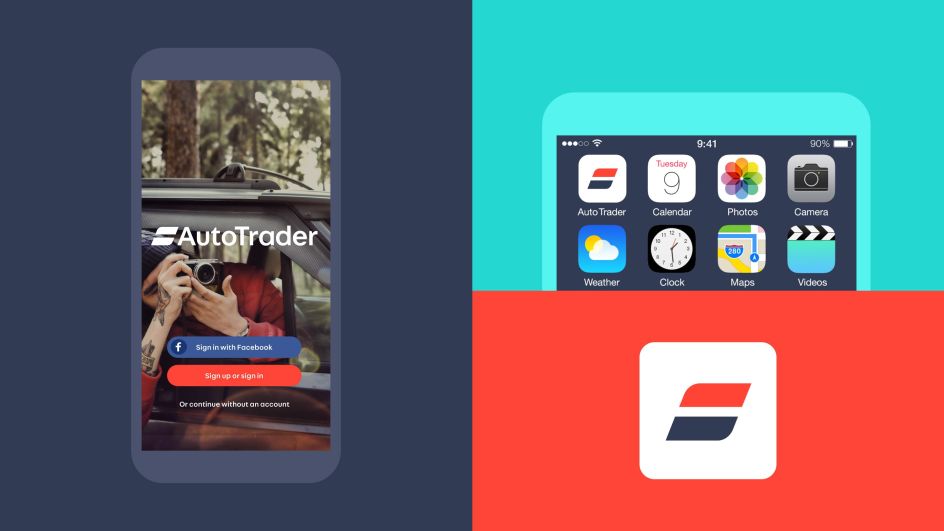
Auto Trader
This more focused approach – was it something you hesitated over? Or did it naturally evolve?
It’s been a conscious decision to become more focused, but we’ve deliberated over how best to articulate it. It’s a reflection of where our work has been going rather than something forced. Over the past couple of years, we’ve noticed the needs of our clients change, and we’ve been more aware of when we’re offering them the most value.
The positioning process was us trying to articulate that succinctly enough, but in a way that still feels focused and specialist. Getting from a few dozen paragraphs down to one is a big challenge!
When you’re used to working on a wide range of projects, it can feel scary to realise that you’re now saying no to doing a lot of that work again. As we were canvassing opinion I even had conversations about it with clients who I realised were less likely to have a need for our services if we went in that direction. But equally, it feels liberating to realise that, by seeing ourselves as more specialist, we’re now much more comfortable talking about what we do best, and that helps to give clients and prospects confidence when they’re embarking on business-critical projects.
Can you talk us through a recent example of using this new approach?
We’re helping prospective clients by demystifying the process and showing three ways they can engage with us. ‘Rethink’ projects are short, rapid processes where a small, senior team of strategists and creatives solve a knotty problem that the client doesn’t have headspace, bandwidth or knowledge to cope with.
A good example of this would be Regus, where we embedded a team to rethink their digital platform around people’s needs rather than office space. We used our innovation framework to envisage new directions and ‘what ifs’, refining this into an approach for the digital experience and prototypes within two weeks.
We’re calling our core projects ‘Refresh’. This is still where the bulk of our work is done, in 3-6 month overhauls of brands, design systems or digital platforms. We’ve been working with Powerleague, the UK’s biggest 5-a-side football provider, to define a new service design that will help that transform into a digitally led business.
We’ve also just started working with FairFX, a digital banking service, as its UI brand design partner. Here we’ll be working alongside internal product teams to help shape a new brand design language that matches the ambition of the group as it brings nine brands into a coherent whole. We’re not working on the ‘traditional’ brand at all, but purely focusing on how it lives through the products, from design patterns and UI components through to big signature moments that make the experience more memorable and shareable.
Finally, we’re recognising the more ongoing relationships we have in our ‘Respond’ work. This includes roster arrangements like our decade-long partnership with the BBC and our long-term engagement with eBay. Here we’ve been helping to grow the automotive part of their business, through brand design, UX optimisation, content strategy and campaigns.
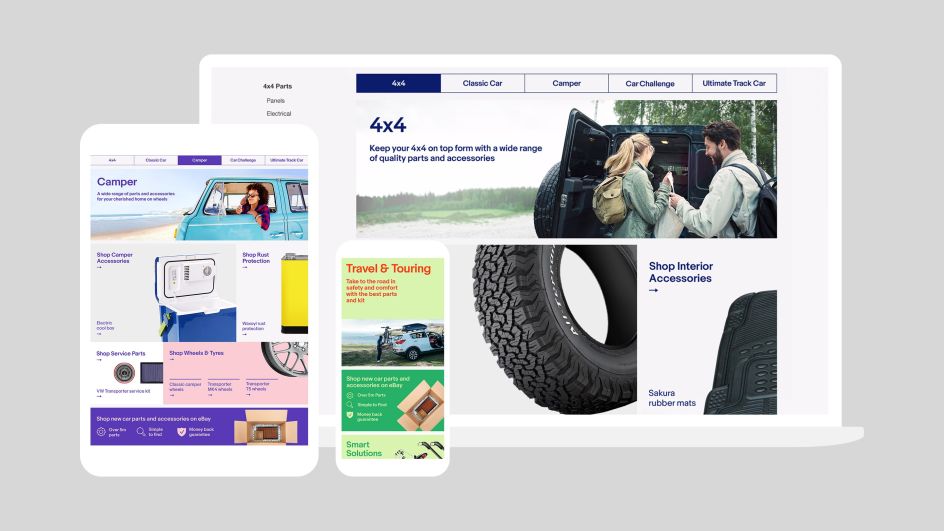
eBay
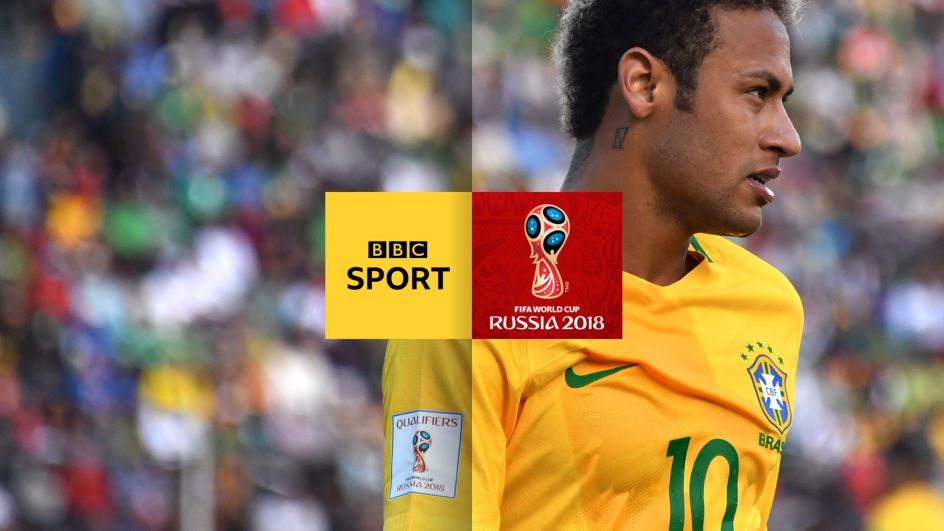
BBC Sport
What about your studio. What's the culture like? What makes you a great place to work?
We’re in a new Workspace building in Farringdon. It’s a bright, open space with white walls, so we’ve added lots of reclaimed timber and a few bits of random furniture to make it feel friendly and a bit more lived in. The desks are arranged in islands so teams can work together without being isolated. Strategists and designers sit together because the nature of our work means that each one informs the other throughout a project.
Impromptu meetings and catch-ups happen all the time, so we’ve created informal spaces and snugs for those to happen. An architect friend helped us with the layout, and he turned an old meeting table into a large ‘family table’. This is a really important space in the studio. As well as letting us eat lunch together – we overlook a brilliant street food market – it creates another informal working space when you need to get away from your desk and focus.
Everyone gathers here for a Friday afternoon wrap-up. You can get quite lost in your own work at times, so it’s important to catch up over a beer, reflect on the week and see what everyone’s been up to. It’s an inspiring way to transition into the weekend.
We try not to force the culture too much, but our repositioning has made us realise how important it is for people to buy into what we’re trying to achieve here. Our vision is to be the benchmark of what today’s design agency should be, so that means constantly looking at every department to see what we can be doing better, how we can communicate more effectively and inspire each other more. We can only do that if everyone is pulling in the same direction.
We’ve reviewed our values, and are looking at ways to put them at the heart of what we do every day, by rewarding people monthly and annually, reviewing against them and bringing them into our studio space. I know it’s a cliché, but you spend so much time at work, that it has to feel a bit like a family. You might not be best friends every day, but there’s a mutual trust and respect because you’re brought together by something you care about.
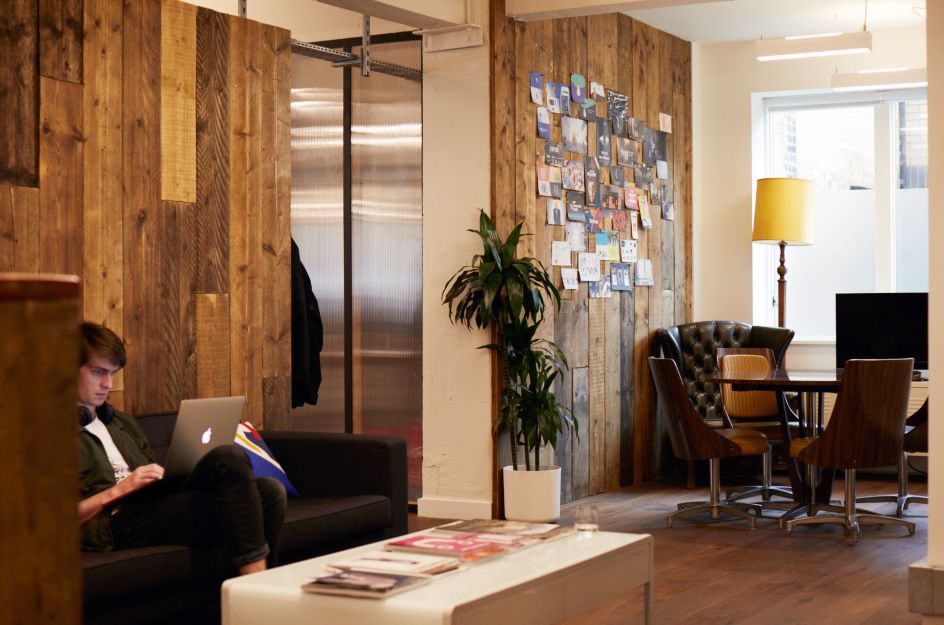
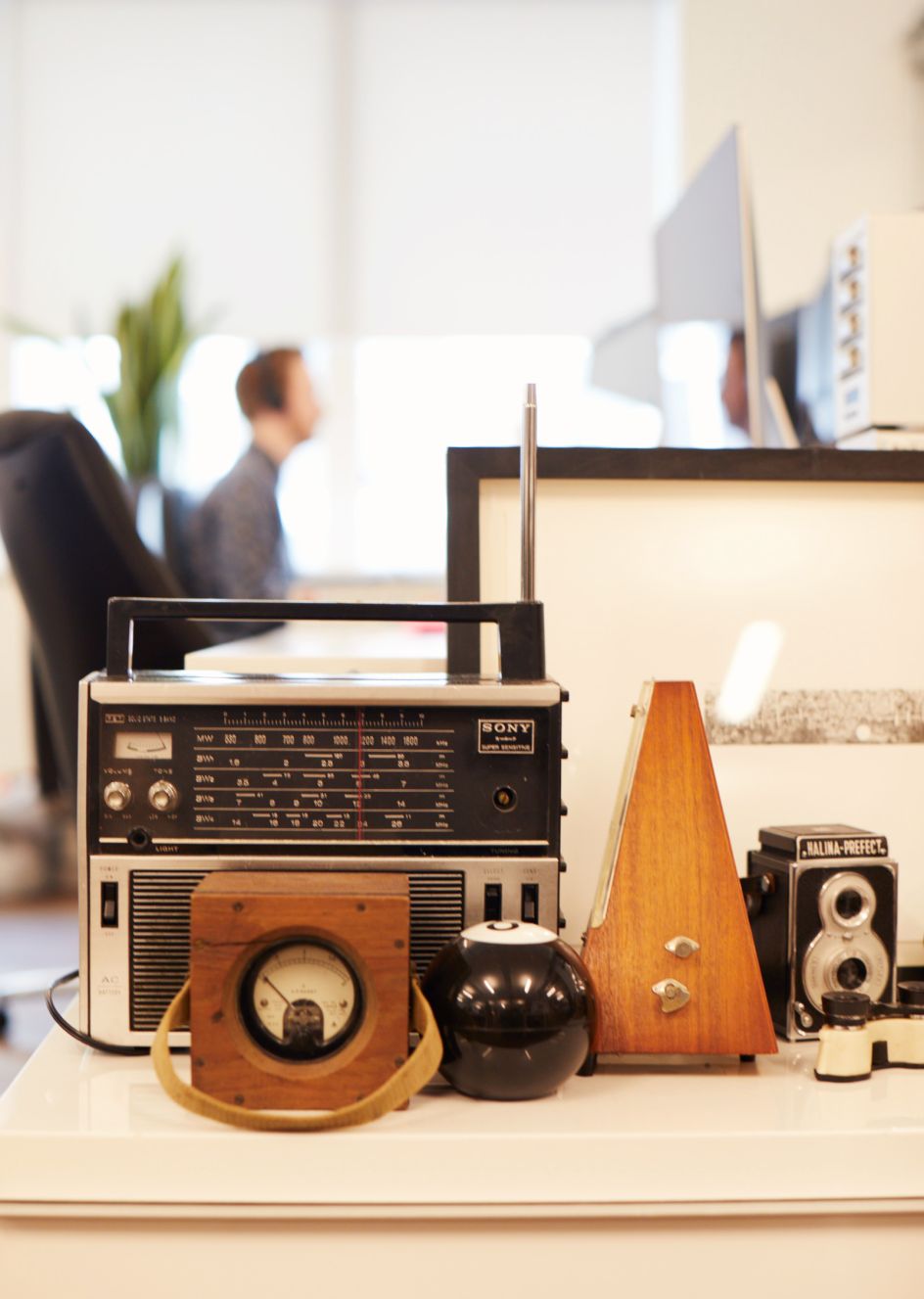
If someone wants to work with you, what do you look for in an employee? What advice would you give?
From the first application, we’re looking to see the potential for them to work the way we like to, but also add something we don’t currently have in the team. We want to see work that goes beyond the usual blog inspiration and demonstrates strong thinking. We’re interested in people who can articulate their ideas well, as that means they’re going to do well in front of clients. And we want people who show a willingness to adapt and learn – the nature of our work is always evolving, so a growth mindset is vital.
A few years ago we started using our values to interview against, and that’s been extremely effective. We ask questions that help us to understand how curious and open someone is, how creative and inventive they are, and whether they’re down to earth enough to build a strong rapport. This is much more powerful than simply reviewing their work or deciding if you like them or not.
Was it always this way? What did you do before Output?
After graduating in 1997, I got a job working for a friend at a small agency in Nottingham, called twelve:ten. We started off doing all the flyers, leaflets and sleeves for local clubs and record labels and it grew into a successful business.
Dan Moore came to work for us, Ian Hambleton was a client of ours, and eventually, the three of us decided the time was right to do our own thing. We learned a lot there, but we’d also become frustrated at the lack of direction, so it helped us to understand what we’d do differently with Output.
Have you stayed deliberately small as a studio? Is small good for you?
In the early years we grew quite quickly, and at times it took us by surprise. Once you get up to about 20 people you need more structure in place, and that can feel alien when you’re used to doing things organically. We’ve also had periods where we followed opportunities for growth which ended up distracting us. At one point we were up to over 50 people, in Nottingham, London and Beijing – it was too chaotic, and we were doubling up on overheads all over the place.
Rather than growing bloated, now we retain our focus by having smaller dedicated teams, each with a clear leadership structure. Output is our design studio, and we have a sister studio called Found who specialise in high-end film and motion. We work together on idents, brand films and UI motion principles, but they also have their own agency clients and execute more tactical projects.
There are about 25 full-time staff across Output and Found, extended by regular trusted freelancers. Being this size means we can all stay close enough to the work, and it helps us to keep working on improving the way we communicate.
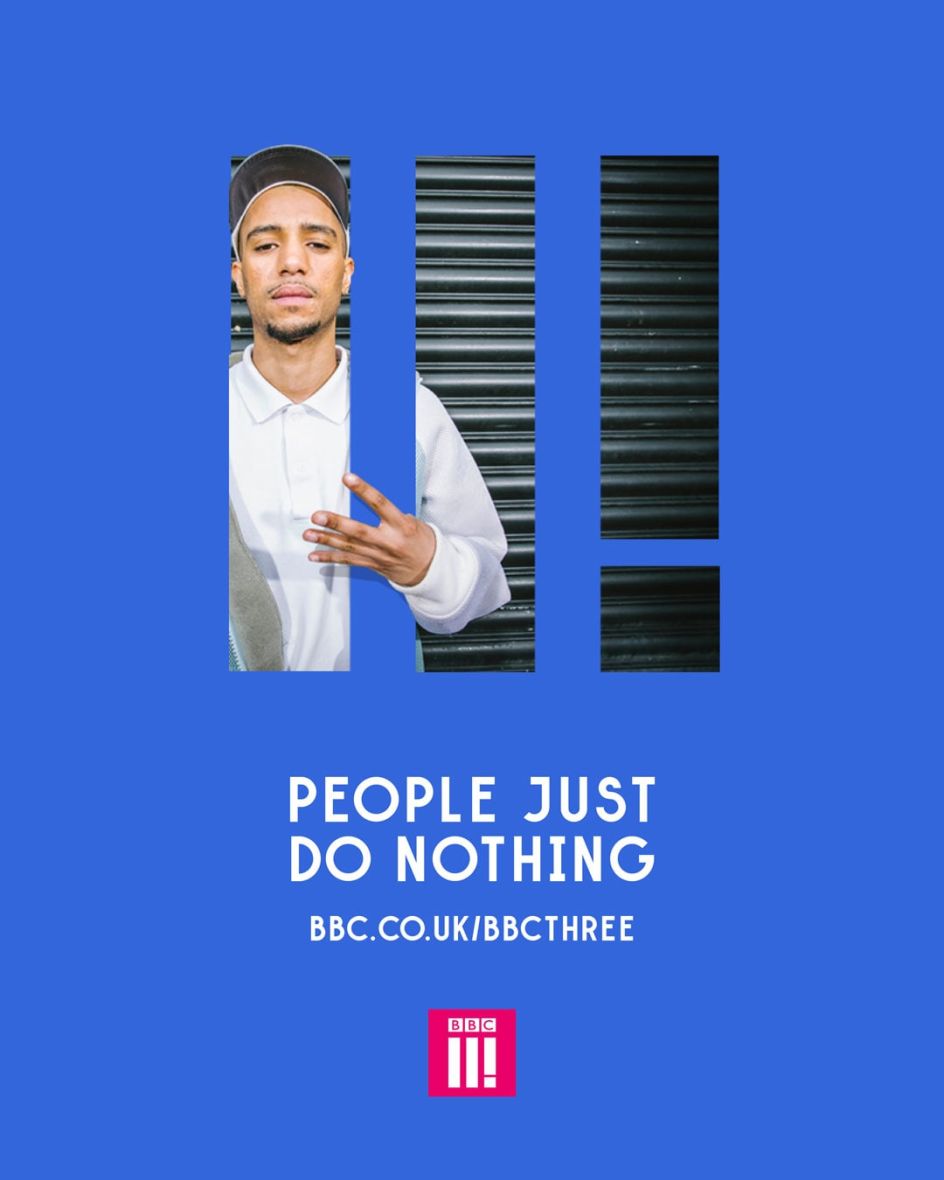
BBC Three
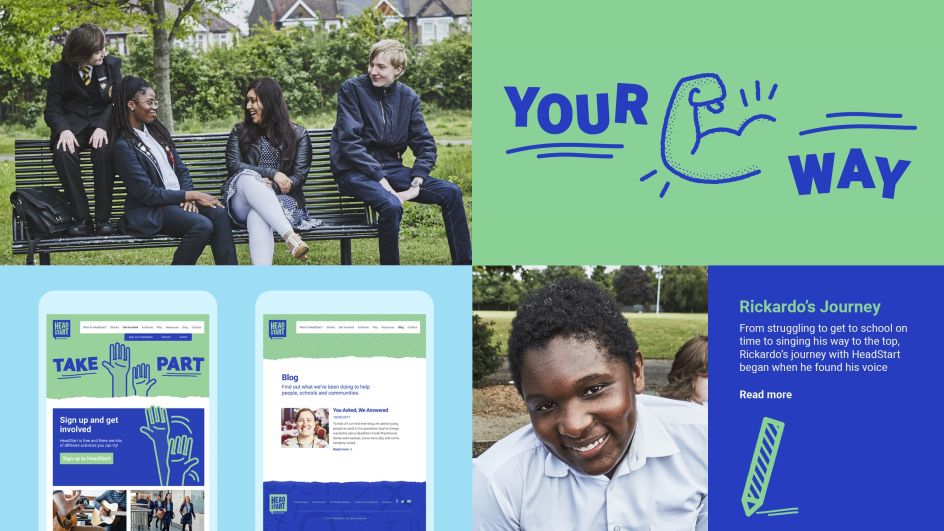
Headstart
What are the biggest challenges you currently face?
Like every agency, we’re seeing a lot of work being taken in-house, and sometimes we lose staff to those teams. But the way we’re positioned, we’re more of a specialist partner to those teams rather than a competitor.
Through working models like ‘Rethink’, we can provide external perspective to help them tackle knotty problems they don’t have the bandwidth or experience to handle. ‘Refresh’ projects often see us alongside internal UX teams, providing brand design expertise and working closely with them to weave it throughout a product. We share the knowledge with them so everyone has ownership of the work.
We also face the challenge of finding permanent staff at certain levels. There’s a big move towards freelancing as people become more senior, given the flexibility and eye-catching financial benefits it offers them. We work regularly with some great freelancers, to the extent where they really feel part of the team when they’re here.
But a strong core of permanent staff is vital to retain knowledge, grow and learn as a team. Often the freelancers come back to permanent roles when they’re after a mortgage or more stability. It’ll be interesting to see how this develops in future.
There’s also constant pressure to stay on top of things from a technological point of view. As we work more across brands, products and services, we can watch the race to the bottom in the advertising industry from a slight distance, but there’s a knock-on effect for us too. The need for everything to be data-driven results in a loss of trust in creative thinking and this is something we need to keep fighting for.
People pay attention to things that are different, and different requires lots of people to be brave along the journey, particularly in a product environment. To help them, we’re working on our own ‘adapt & thrive’ index project to demonstrate how our work propels the organisations we work with.
Is there anything that frustrates you about the industry? Anything you'd love to see change?
The perpetual gripe for agencies is the need to free pitch, but it’s unrealistic to expect it to disappear. Clients invest lots of money in something intangible, and they need to get a sense of where the thinking is going to be able to judge whether that investment is worthwhile.
Rather than grinding against those gears, we’ve positioned ourselves to a place where our point of difference is much clearer. This improves the quality of conversations because it’s more obvious when we’re the right people to work with a potential client. Then you can start challenging each other and working together in the right way, rather than jumping through hoops which aren’t designed to produce the best work.
Aside from your business, what's been the theme of 2018? Has it been a good year for you?
That’s a good question because it’s easy to get lost in the overarching narrative that everything is terrible and getting worse! And if we constantly read about Brexit and Trump, then we’ll carry that thinking around with us. But these are paradigms – stories we tell ourselves which end up limiting our thinking and holding us back.
We’ve been doing a lot of work as a leadership team this year, with an organisation called Pragma. It’s helped us to really understand how the mind works, how we interpret what happens around us, and how we can recognise the way our thoughts create our experience. It’s led to much better communication between the team, greater understanding and compassion for each other and, ultimately, more effective leadership.
As well as the business, I’m trying to use this approach to family life and in coaching my son’s football team. Reflecting on that, the story of the year is definitely a positive one.

















